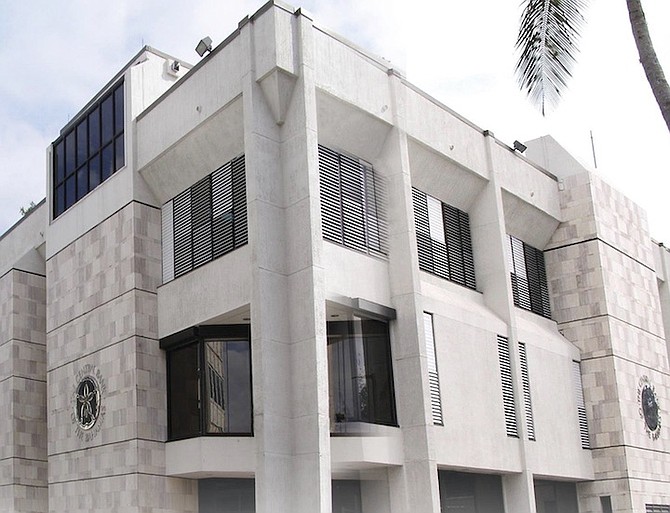By NEIL HARTNELL
Tribune Business Editor
nhartnell@tribunemedia.net
The Central Bank’s governor yesterday predicted that The Bahamas’ external reserves will end 2022 “not far off $2bn” and ensure the US dollar exchange rate peg faces “no undue pressure”.
John Rolle, speaking as the Central Bank unveiled its economic developments assessment for the 2021 fourth quarter and full year, said the monetary policy regulator saw “no basis to react in any defensive way” throughout 2022 to safeguard the foreign currency reserves.
With tourism-related inflows continuing to pick up as the Bahamian economy re-opens, Mr Rolle forecast that import and spending activity would reduce the external reserves slightly in 2022 but “not by a very drastic amount”.
“The foreign reserves reflect the reality of everything that happens in The Bahamas,” he explained. “We are seeing the volume of inflows increase as tourism returns. That really is the source of the overwhelming majority of the expenditure we make in foreign exchange.
“On the margins, the foreign reserves take the hit if demand for foreign exchange grows slightly ahead of the large pick-up in inflows and, on that basis, the Central Bank see no basis to react in any defensive way as far as the foreign reserves are concerned.
“If the reserves are impacted in this way, we anticipate the reserves at the end of 2022 will not be far off the $2bn mark even if they are reduced compared to 2021, comparing December to December.”
Mr Rolle said the Central Bank’s overriding goal at the start of the COVID-19 pandemic had been to “ensure a stable outcome for the reserves” and protect the one:one currency peg with the US dollar.
While there was expected to be a drawdown on the external reserves as persons in the Dorian-hit islands used reinsurance monies to finance reconstruction, the Central Bank governor said any impact would be marginal when set against $5bn of foreign currency inflows - and a similar amount of outflows - in any given year.
And, while increased travel and economic activity will also lead to greater foreign currency spending, Mr Rolle said: “We pointed out on several occasions that any accumulation in the reserves that resulted from the Government’s borrowing strategy, those are not permanent components of the reserves.”
Foreign exchange market activity continues to reflect the Bahamian economy’s re-opening following the COVID-19 pandemic. “Conditions in the Bahamian foreign exchange markets have recovered to a significantly more sustainable state,” the Central Bank governor added.
“On a net basis, the private sector’s reliance on foreign currency supplies from the Central Bank shrunk by two-thirds in 2021, even though by the third quarter of the year the bank had relaxed all of the conservation measures that were put in place early in the pandemic to protect the external reserves.
“As evidence of the turnaround, in 2021 there was a 40 percent or $1.5bn recovery in foreign currency sales through the private sector to commercial banks, a dominant majority due to the resumption of tourism activity,” he added.
“Likewise, with the economy reopened, domestic demand for foreign exchange that was purchased from commercial banks also recovered sharply by 27 percent, or $1.1bn.” However, without the boost from the latest International Monetary Fund (IMF) special drawing rights (SDRs) allocation, The Bahamas’ foreign currency reserves would have contracted in 2021.
“In the absence of the IMF special drawing rights (SDRs) allocation, The Bahamas would have experienced a net reduction in the external reserves of $167m in 2021,” Mr Rolle conceded.
“With the SDRs boost, the reserves rose instead by approximately $80m. The reduction, in the portion of reserves that were not denominated in SDRs, was in line with the Central Bank’s accommodating stance for increased domestic spending. Under similar accommodation, the external reserves could also tolerate some reductions in 2022, without cause for concern.
“In its monetary policy posture, the Central Bank will continue to accommodate strengthening domestic demand for foreign exchange, and therefore concede some reduction in the external reserves in the near term. This includes expanding capital market transactions through the investment currency market.”
As for the banking sector, Mr Rolle forecast that the industry’s non-performing loans - currently pegged at 9.6 percent of its total outstanding credit portfolio - will decline by year-end 2022.
“In respect of domestic credit, in the near-term the pandemic could result in additional losses for lending institutions, though very moderated from the upfront charges for which banks made provisions in 2020,” he added.
“A key measure of risk, and the potential for losses, the private sector delinquency or non-performing rate on commercial bank loans had increased to 9.6 percent at the end of 2021 from a pre-pandemic level of approximately 8 percent.
“Although this rate could rise further in the immediate months ahead, the Central Bank believes that it will stabilise and begin to decline before the end of 2022. As a sign of the improved clarity, at present, virtually all loans that were in deferred payment arrangements at the middle of 2020 have returned to some regular payment status.”
Mr Rolle continued: “In 2021, however, credit to the private sector contracted again, reflecting net repayments for mortgages and consumer loans. Nevertheless, there was further increase in lending for business and other purposes.
“Outstanding credit could remain flat to contracted in 2022. In particular, lending institutions are still held back by delinquency rates which have to improve to levels even below the average ratios experienced ahead of the pandemic.
“Such an outcome remains dependent upon expanding economic activity, and increasing the pool of qualified borrowers for credit as the economy improves. Structural reforms such as the credit bureau and the anticipated collateral registry will also have positive impacts on this environment over the medium-term.”





Comments
Use the comment form below to begin a discussion about this content.
Sign in to comment
Or login with:
OpenID